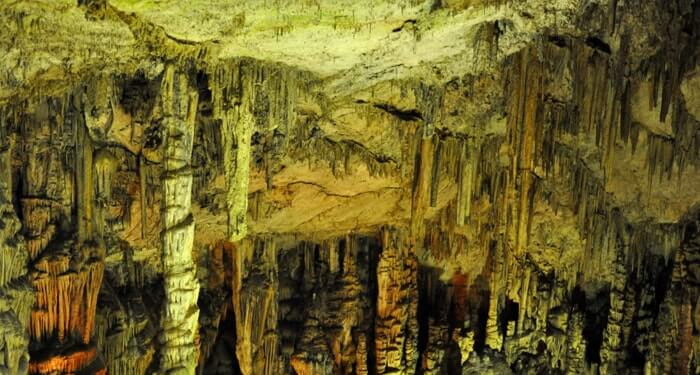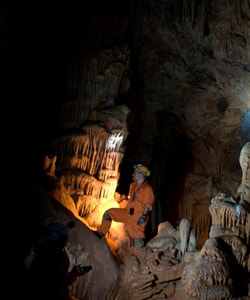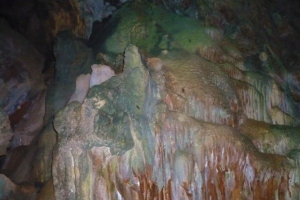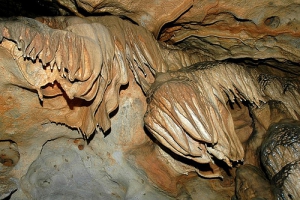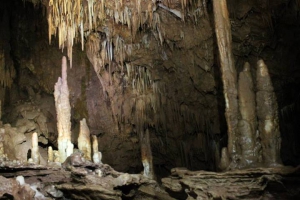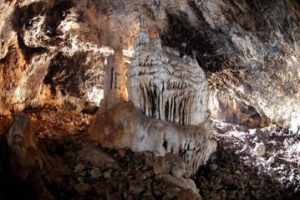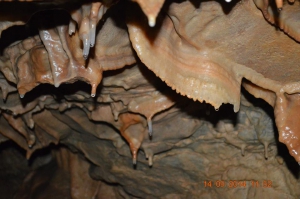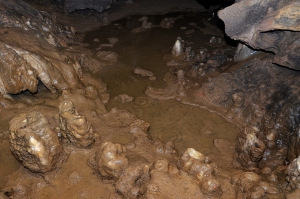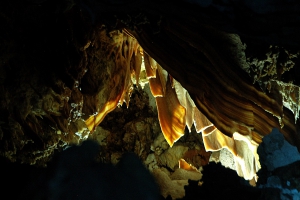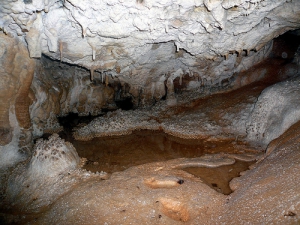The cave of Peristeras is located at the northwestern edge of Limnakaro plateau, south of the village Avrakontes. It was found that in the Middle Minoan period it was user for funerary purposes. Today, the great entrance of the cave is blocked by giant rocks, hindering the tour in the cave.
The Cave Ano Peristeras is one of the many underground rivers of the area of Karidi, Sitia province. It is located at an altitude of 650 meters, the length of routes exceed 5500m and its depth exceeds 220m.
The Cave Dadoulas or Maxime is an underground river at Dadoulas area by Vrysidi settlement. It has a total routes’ length of 760m, depth of 260m and ends at a siphon (well). It has very rich decor and is characterized as a "living museum of the geological history” of the region.
The Trapeza Cave has been used as a place of worshiping, something that is certified by the innumerous conches on its ground but also by its flat which is in front of the entrance which both are dated from the middle-Minoan era until the after-Minoan. The most important findings of the cave are two idols of men in worshiping position.
At position Patelia, about 1 km NW of Sitanos we meet the large cave of Oxo Latsidi, formed in Jurassic limestone. It was originally accessible for 50m. It was later studied by Paul Faure and mapped by Eleftherios Platakis and Ioannis Tsifetakis, who found a long tunnel 360m long. After the entrance we meet a room (34m x 16m) and a chamber on the right (32m). On the left, for 330m extends the tunnel with a width of 2-8 m and a height from 0.5m-1.5m. Recent surveys give the cave a longer length of up to 1.000 m. The different flows of water give the impression that it was once an underground riverbed. Generally the decoration is poor.
A few meters south of the entrance of cave Chainospilios, we meet the cave Hamoto Spiliari (i.e. Low-roof Cave), which has a length of 32 meters, a maximum width of 6 meters and a height of 6 meters. It is a very small cave, but it has its charm and deserves being explored!
The Anonym Cave of Tylissos is located 16 km west of Heraklion, about 1 km before reaching Voulismeno Aloni, at an altitude of 250 meters. It was revealed in 2010 during the works for the new road connecting Tylissos with Anogia.






